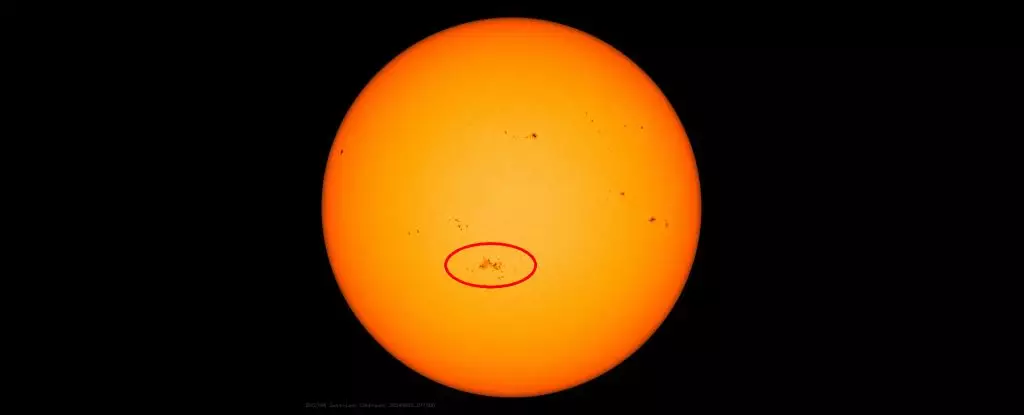The sunspot region known as AR 3664, which was responsible for the breathtaking auroras visible on Earth in early May, has made a reappearance. This region, which previously unleashed several powerful X-class flares, including the most intense one of the current solar cycle, rotated out of view onto the far side of the Sun in mid-May. However, it has now returned with a bang, reappearing on the Sun’s horizon on May 27th with a new designation – AR 3697.
Upon its return, AR 3697 wasted no time in exhibiting its volatile behavior. On May 27th, it erupted with another significant X-class flare, this time registering at X 2.8. Since then, it has continued to unleash its fury, with a total of five X-class flares recorded to date. These include an X1.45 flare on May 29th, an X1.1 flare on May 31st, and two flares on June 1st – an X1.03 and an X1.4.
While the solar storms witnessed in early May may not be replicated by the recent flares from AR 3697, the region is still actively emitting weaker flares on a daily basis. On June 2nd alone, it released two M-class flares, which are ten times weaker than X-class flares, as well as 10 C-class flares, which are ten times weaker than M-class flares. Although the impact of these weaker flares on Earth is expected to be minimal, there is a 30 percent chance of more X-class flares occurring, as per Spaceweatherlive.
Potential for Solar Storms
As AR 3697 is now positioned near the center of the Sun’s disk, any further eruptions are likely to be directed towards Earth. While this does not guarantee coronal mass ejections (CMEs), the likelihood of such activity occurring is higher than usual. Additionally, with the Sun approaching or at the peak of its 11-year activity cycle, there remains the possibility of new sunspot regions developing and contributing to future celestial light displays in the coming months.
The return of solar flare AR 3697 has reignited interest in solar activity and the potential for captivating auroras to grace the Earth’s skies once again. While the impact of the recent flares may be limited, the continuous monitoring of solar phenomena remains crucial in understanding the dynamics of our ever-changing Sun.


Leave a Reply